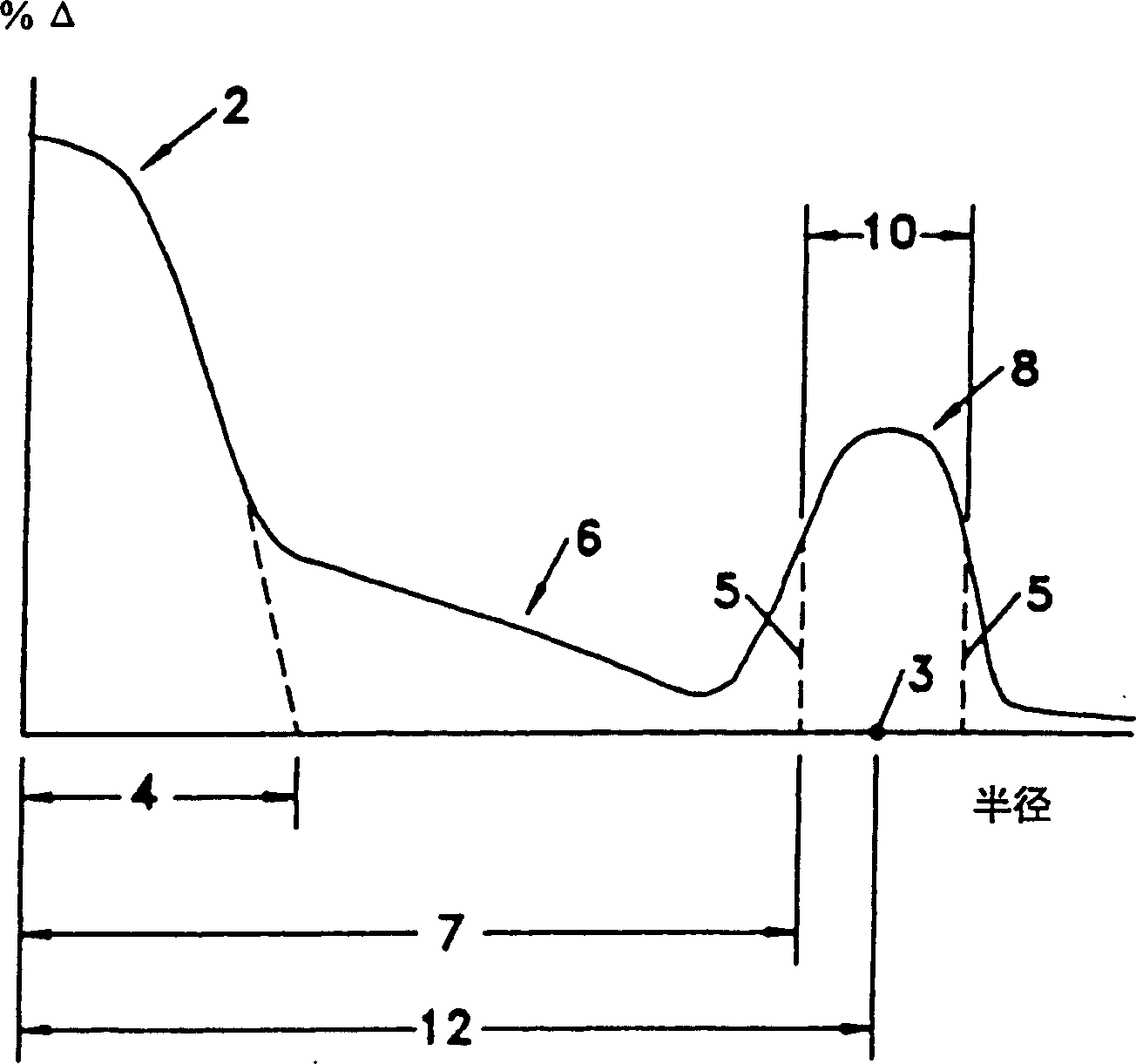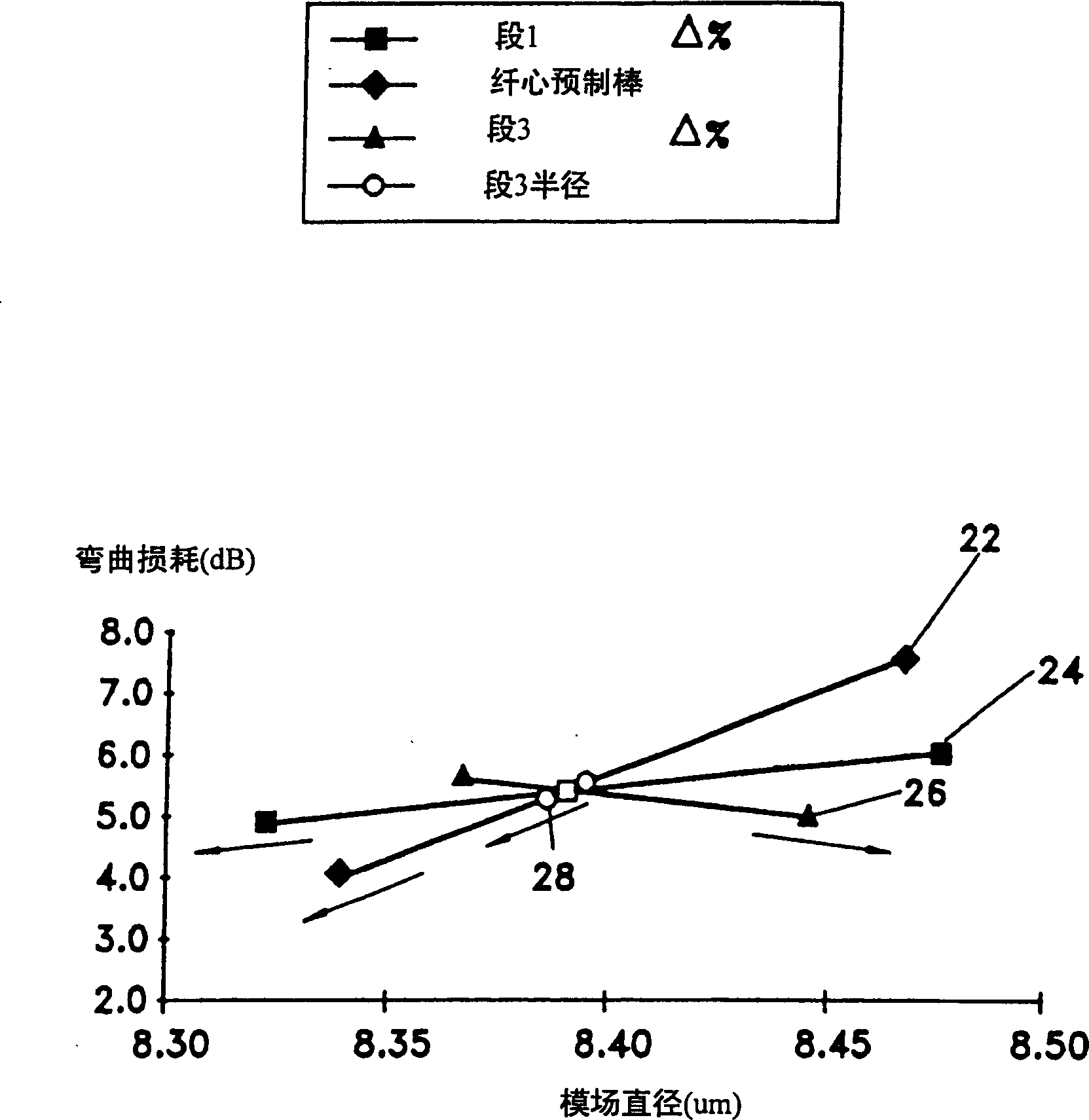Single mode optical fibre
A single-mode fiber, fiber technology, applied in clad fibers, multi-layer core/clad fibers, optics, etc., can solve the problems of limiting four-wave mixing nonlinear dispersion, low total waveguide dispersion, etc.
- Summary
- Abstract
- Description
- Claims
- Application Information
AI Technical Summary
Problems solved by technology
Method used
Image
Examples
Embodiment Construction
[0073] The novel optical fiber described here includes a core region with three segments. These segments are distinguished from each other by the refractive index profile characteristics of a given segment. The three-segment core region provides sufficient flexibility for fiber design to accommodate a wide range of functional requirements. Parameters that can be varied to provide specific fiber performance are:
[0074] Δ% for each of the three domains;
[0075] the radius of each of the three regions; and
[0076] The shape of the refractive index profile for each of the three regions.
[0077] The properties of the novel fiber described here are: positive total dispersion in the specified wavelength range of 1530nm to 1570nm to counteract the non-linear effect of SPM; very low dispersion slope in the specified wavelength range to facilitate WDM operation ; and zero dispersion outside the specified wavelength to limit dispersion due to four-wave mixing. Positive dispersi...
PUM
| Property | Measurement | Unit |
|---|---|---|
| Wavelength | aaaaa | aaaaa |
Abstract
Description
Claims
Application Information
 Login to View More
Login to View More - R&D
- Intellectual Property
- Life Sciences
- Materials
- Tech Scout
- Unparalleled Data Quality
- Higher Quality Content
- 60% Fewer Hallucinations
Browse by: Latest US Patents, China's latest patents, Technical Efficacy Thesaurus, Application Domain, Technology Topic, Popular Technical Reports.
© 2025 PatSnap. All rights reserved.Legal|Privacy policy|Modern Slavery Act Transparency Statement|Sitemap|About US| Contact US: help@patsnap.com



